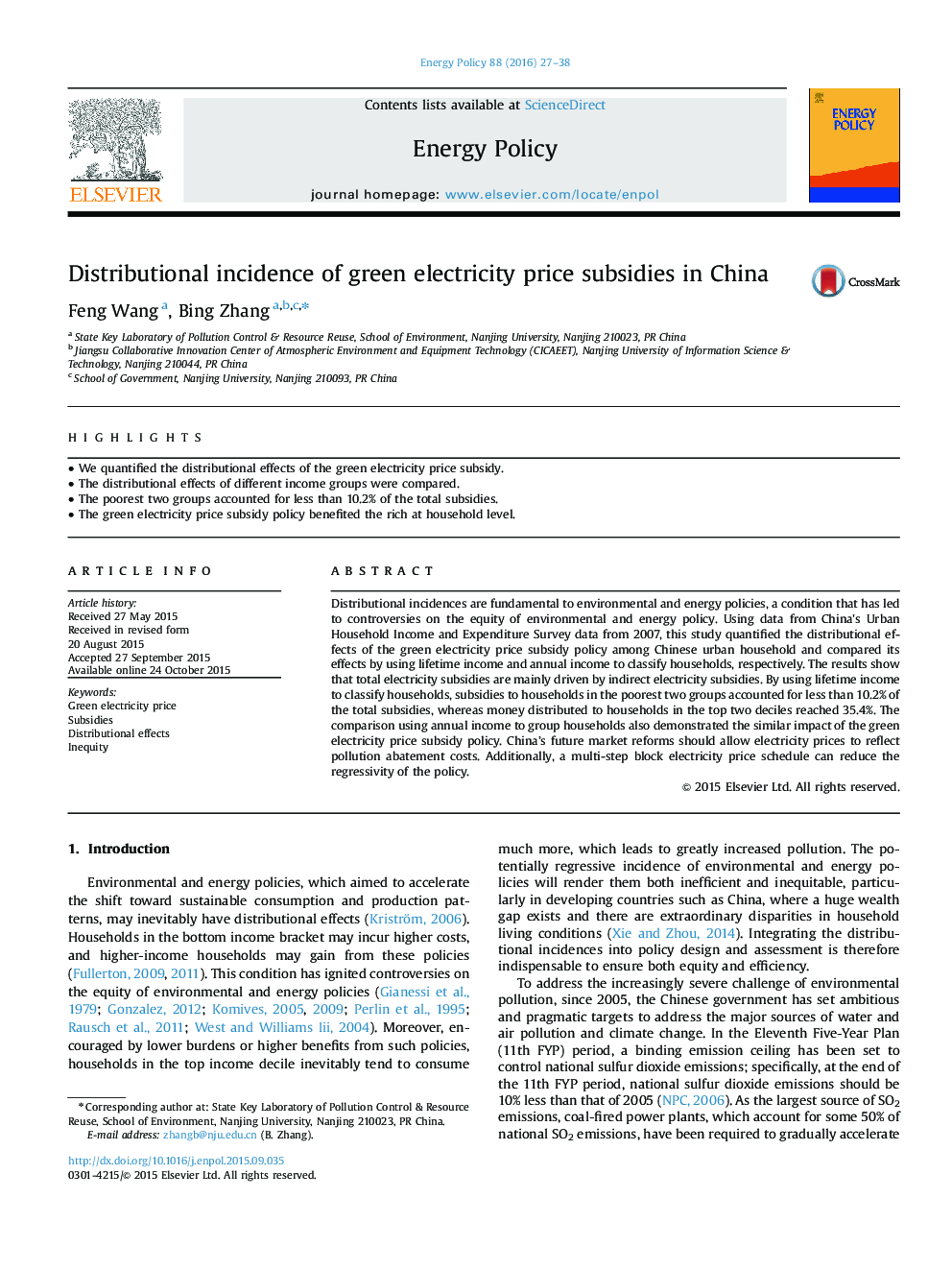| Article ID | Journal | Published Year | Pages | File Type |
|---|---|---|---|---|
| 7400162 | Energy Policy | 2016 | 12 Pages |
Abstract
Distributional incidences are fundamental to environmental and energy policies, a condition that has led to controversies on the equity of environmental and energy policy. Using data from China's Urban Household Income and Expenditure Survey data from 2007, this study quantified the distributional effects of the green electricity price subsidy policy among Chinese urban household and compared its effects by using lifetime income and annual income to classify households, respectively. The results show that total electricity subsidies are mainly driven by indirect electricity subsidies. By using lifetime income to classify households, subsidies to households in the poorest two groups accounted for less than 10.2% of the total subsidies, whereas money distributed to households in the top two deciles reached 35.4%. The comparison using annual income to group households also demonstrated the similar impact of the green electricity price subsidy policy. China's future market reforms should allow electricity prices to reflect pollution abatement costs. Additionally, a multi-step block electricity price schedule can reduce the regressivity of the policy.
Related Topics
Physical Sciences and Engineering
Energy
Energy Engineering and Power Technology
Authors
Feng Wang, Bing Zhang,
